What Is Crane?
Important Point
A crane is a significant type of construction machine that’s utilized to move the loads horizontally. Equipped with a hoist rope, cable ropes and sheaves, it may be used to lift heavy loads or transport them to other places.
The mechanical benefits created by several elements on the crane may produce powerful strength.
How Does a Crane Work?
Cranes are part of the construction process since its invention in Greece. The cranes are basically for heavy construction work and for all types of lifting tasks.
Equipped with pulleys and cables and based on the use of fundamental mechanical principles, a crane could lift and lower loads that no human working capacity could.
Crane design has evolved to meet the requirements of a wide variety of industrial needs, and modern cranes often coordinate simple systems to do complex lifting jobs – sometimes in environments that could be dangerous for human workers.
Also, Read: Different Types of Plumbing Pipes for Different Use
19 Types of Cranes
Different types of cranes are as follows.
- Telescopic Crane.
- Mobile Cranes.
- Truck Mounted Crane.
- Tower Crane.
- Rough Terrain Crane.
- Overhead Crane.
- Bridge Crane.
- Jib Crane
- Crawler Crane.
- Aerial Crane.
- Hydraulic Crane.
- Carry Deck Crane.
- Floating Crane.
- Bulk-handling Crane.
- Hammerhead Crane.
- Stacker Crane.
- Railroad Crane.
- Harbor Cranes.
- Level Luffing Crane.
1. Telescopic Crane
The telescopic crane consists of a large boom where some numbers of tubes have been fitted inside with each other.
It increases their height with the help of tubes throughout the hydraulic system. They are specially used to transport goods from one place to another.
When it comes to transferring the object into a high place, Telescopic cranes would be the best. Since they could adjust their heights in line with the place. They may also be used in rescue operations.
Also, Read: What Is Measurement Book | How to Write Measurement Book | Recording Measurement Book
2. Mobile Cranes
Mobile cranes are generally found on vehicles, but cranes used for construction work are adapted to move on the tractor, and several cranes may be attached to barges when used for construction work on waterway bridges.
The lifting arm is usually articulated to allow lifting and reduction as required. generally, this is achieved through a system of cables or hydraulic mechanisms, and the whole mobile structure may be coupled to a support to provide more stability during its operation.
3. Truck Mounted Crane
Truck-mounted cranes are made up of both parts of the carrier, along with the boom (arm). Due to their unique build, they are ready to travel easily on the road without a unique setup or transportation equipment.
Truck-mounted cranes are outfitted with counterweights and outriggers for insertion, allowing them to move slowly while carrying a large load.
Different versions of this truck-mounted crane exist; for example, special truck-mounted cranes are used for the inspection, maintenance, and building of bridges.
Also, Read: What Is Inverted Beam | Advantages of Inverted Beam | Purpose of Inverted Beam
4. Tower Crane / Construction Crane
Commonly utilized in the construction of tall buildings, tower cranes offer you amazing lifting capabilities. |Because of their size, tower cranes are equipped with an operating cab that controls the whole crane.
Tower cranes have their jib extending horizontally from the mast (tower part), which itself rests on a concrete base. A luffing jib can move up and down, while the fixed jib has an operating dolly that moves materials horizontally.
The engine (known as a slewing unit) that controls the rotation of the crane sits on the top of the mast. As a result of their size, tower cranes are built together with the building, growing alongside it; once the building is done, the process is reversed.
Using its height, ability to lift heavy materials, and various features, tower cranes are an essential tool when constructing a tall building.
5. Rough Terrain Crane
A rough terrain crane is a crane that’s mounted in an undercarriage with four rubber wheels, designed for operations off-road.
The outriggers extend vertically and horizontally to level and stabilize the crane when hoisting. These types of cranes are single-engine machines in which the same engine can be used for powering the undercarriage as it is for powering the crane.
These cranes are ideal for construction sites that have uneven, dirt, and rocky terrain. The mobility and ability of this crane to travel around the site make it an effect support crane for lighter hoists on the highway, infrastructure, and construction projects.
Also, Read: How to Building Construction Process Step by Step
6. Overhead Crane
These types of cranes can also be known as suspended cranes. They are usually used at a factory, and some are able to lift very heavy loads.
The hoist of the crane is set onto a trolley that can move in one direction along a beam, sometimes both beams.
They move at angles to the direction across the ground or elevated level tracks. The tracks are usually mounted across the side of an assembly area.
7. Bridge Crane
The bridge crane also called an overhead crane, is generally found in industrial environments. Its name comes from the fact that it resembles a bridge supported by both steel beams, which straddle the workload, together with the hoist travelling along the bridge part of the crane. There are both subtypes of overhead cranes: gantry and jib cranes.
Gantry
A variant of this overhead crane is the gantry crane, although sometimes both terms are used interchangeably.
The most critical difference between a bridge and gantry crane is that the gantry crane is supported by both a-frame steel legs and is normally built on a track.
Gantry cranes are generally seen at shipping docks and ports, lifting cargo off ships.
8. Jib Crane
Jib cranes are just another version of the bridge crane. These kinds of cranes are permanently installed within a workstation and usually utilized for repetitive tasks.
The jib, or arm, is usually mounted on either a wall or floor-mounted pillar using a moveable hoist and might have some additional movement.
Also, Read: Building Estimation Step by Step In Excel Sheet
9. Crawler Crane
Crawler crane moves it self with the help of tracks that are also known as crawlers. It has many disadvantages and advantages depending on its use.
Their main advantage is that it may move mostly on any surface of the earth; it may even move on soft soils because of its crawlers.
Because it transfers its load to a great area. That is why it may be used at unprepared sites without worrying about anything.
And their main disadvantage is that it is very heavy and move on tracks. That is why it can’t be moved easily from one site to another and will cost more money.
However, it can be moved by trucks easily and without costing much money.
10. Aerial Crane
These types of cranes can also be known as Sky Cranes. They looked like helicopters and used to carry large loads.
They’re used mostly because places where reaching by land is difficult. And as all of you know that Helicopters fly, that means they’re capable of reaching any place.
They generally lift loads to high rise buildings. They could lift anything in their capacity from boats, cars to pre-made swimming pools. They may also be used for rescue purposes in disaster.
Also, Read: How to Find House Construction Cost
11. Hydraulic Crane
Hydraulic cranes could be simple in design but can perform difficult tasks that would otherwise seem impossible.
In a matter of minutes, these machines are capable of assembling beams on the roads, lifting heavy equipment in factories, as well as building houses.
12. Carry Deck Crane
Carry deck cranes are a relatively new type of crane which evolved from the older pick and carry model, which was first introduced in the 1980s.
They are small, four-wheeled, can rotate a full 360 degrees, and are more portable than other types of cranes.
Carry deck cranes are easy to set up, and their small size easily allows them to navigate around open and restricted spaces, making them a staple on many job sites.
Also, Read: What Is Development length | What Is Development Length of Bars
13. Floating Crane
Also called a crane vessel or crane boat, these floating cranes are used for projects in the sea, like ports or oil rigs.
These cranes have a rich history they’ve been used since the Middle Ages as well as with the help of continuous technological advancements, have helped many generations of people.
As of today, there are several types of floating cranes as well, like the sheerleg and semi-submersible. Nevertheless, the only difference floating cranes have from another common type is that they’re used in the sea.
14. Bulk-Handling Crane
Bulk-handling cranes are utilized to carry large volumes of heavy materials, such as coal or minerals.
Instead of a hook at the end, bulk-handling cranes have a specialized hook that uses a grabbing mechanism along with a bucket to grab, hold, and lift materials.
Also, Read: Why Hairline Cracks in Concrete | Type of Cracks in Concrete
15. Hammerhead Crane
Hammerhead cranes are a few of the most commonly utilized in construction projects. This crane has a horizontal, swivelling lever resting on a fixed tower.
The trolley is held at the forward part of the arm and can be counterbalanced with the part of the arm, which extends backwards.
Hammerhead cranes also offer a feature called racking, which allows the trolley to move forward and back horizontally along the crane arm. These cranes can be extremely heavy and are assembled on the job site.
16. Stacker Crane
Stacker cranes are automated machines using a forklift-like mechanism and are primarily designed for warehouse storage.
Normally, stacker cranes are used in places with special working conditions, such as extremely cold temperatures, making it unnecessary for a human worker to endure extreme working conditions.
Also, Read: What Is Slab Beam / Hidden Beam / Concealed Beam | Advantage and Disadvantage
17. Railroad Crane
These kinds of cranes move on the railway track. Rail Road Cranes are utilized for the construction of railway lines, maintenance, and for their repairing.
They cannot travel on roads or another place except railway tracks because of the flanged wheels.
18. Harbor Cranes
Thie crane use for harbor area. So, called Harbor cranes, this crane use loading and unloading of ships.
19. Level Luffing Cranes
This crane features a special mechanism where the crane hook was made to stay at a constant level. Because of this, up and down motions of the jib arm is only going to move the hook towards, or away from, the base of the crane.
Advantage of this type of motion is that the crane could be set to operate at a fixed level relative to the ground, where such action is required to handle load materials with precision as may be often be required, for instance, during shipbuilding.
Types of Cranes and Uses of Carnes
| Sr.No. | Types of Cranes | Use of Cranes |
| 1 | Telescopic Crane | Highly adaptable for a variety of mobile situations |
| 2 | Mobile Crane | Lift heavy objects and move them short distances |
| 3 | Truck Mounted Crane | Mainly for loading and moving equipment on job site |
| 4 | Tower Crane | Building large structures |
| 5 | Rough Terrain Crane | Pick and carry operations on rough terrain |
| 6 | Overhead Crane | Extremely heavy or bulky loads through the overhead space in a facility |
| 7 | Bridge Crane | Typically used for industrial environments |
| 8 | Crawler Crane | Jobs with soft/uneven terrain |
| 9 | Aerial Crane | Places where it’s hard to be reached by land cranes |
| 10 | Hydraulic Crane | A hydraulic crane is a type of heavy-duty equipment used for lifting and hoisting. |
| 11 | Carry Deck Crane | Loading and moving materials on job sites |
| 12 | Floating Crane | Projects on the sea, like ports or oil rigs |
| 13 | Bulk-handling Crane | Lifting and moving bulk cargo, like coal or scrap metal |
| 14 | Hammerhead Crane | One of the most commonly used crane types |
| 15 | Stacker Crane | Retrieval of cargo in warehouse storage |
| 16 | Railroad Crane | A railroad for one of three primary purposes: freight handling in goods yards, permanent way (PW) maintenance, and accident recovery work |
| 17 | Harbor Crane | Unloading small loads (balls, crates, etc.) from ships at the Port of Barcelona |
| 18 | Level Luffing Crane | Large project and industrial equipment installing field where large lifting capacity, high perching accuracy and high safety are required for lifting large members and equipment component |
What Is Crane?
a large, tall machine used for moving heavy objects by suspending them from a projecting arm or beam.
Types of Cranes
- Tower Crane
- Mobile Crane
- Overhead Crane
- Jib Crane
- Gantry Crane
- Floating Crane
- Crawler Crane
- Telescopic Crane
- Level Luffing Crane
What Is the Biggest Crane in the World?
Sarens SGC 250
The SGC-250 crane is the largest crane in the world. This particular crane has a maximum load moment of 250.000 metric tonnes, which enables it to lift an incredible 5.000 tonnes. Even at a broader radius of 100 meters, it can still lift an incredible 2,000 tonnes.
What Is a Gantry Crane?
A gantry crane is a type of crane that is typically used to lift and move heavy objects in industrial environments, such as shipping yards, warehouses, and manufacturing facilities. It is a crane that is supported by a structure that spans an area, rather than being mounted on a fixed structure or vehicle.
How Many Types of Crane?
There are two main categories of cranes: static cranes and mobile cranes. A static crane is a permanent/semi-permanent structure fixed to the ground or building that lifts and moves loads along a fixed path. A mobile crane is mounted on treads or wheels and can be moved from job site to job site.
Types of Industrial Cranes
- Overhead Crane
- Gantry Crane
- Jib Crane
- Tower Crane
- Mobile Crane
- Crawler Crane
- Telescopic Crane
- Floating Crane
Aerial Crane
An aerial crane, also known as a helicopter crane or sky crane, is a type of crane that is mounted on a helicopter to lift and move heavy loads in remote or inaccessible areas. Aerial cranes are often used in construction and infrastructure projects, such as building transmission towers or placing equipment on top of tall buildings.
What Are Cranes Used For?
Cranes in construction are used to lift or lower objects and move them horizontally. Either way, all cranes are equipped with pulleys and cables that are useful when it comes to moving objects around. They are usually temporary structures that are either mounted on a custom-built vehicle or fixed to the ground.
Industrial Crane Types
- Straddle Crane
- Stacker Crane
- Floating Crane
- Telescopic Crane
- Crawler Crane
- Gantry Crane
Uses of Crane
A crane is a machine that is used to lift and move heavy loads, machines, materials, and goods for a variety of purposes. They are used in all different sectors of industry, from construction to manufacturing to shipbuilding and material loading.
What Are Cranes?
A crane is a type of machine, generally equipped with a hoist rope, wire ropes or chains, and sheaves, that can be used both to lift and lower materials and to move them horizontally. It is mainly used for lifting heavy objects and transporting them to other places.
A Type Crane
As the name suggests, tower cranes assist in constructing tall buildings. These cranes work well at heights between 230 and 265 feet, and they can lift up to 20 tons.
Fixed Crane Types
- Bridge/Overhead Cranes. There are two types of bridge or overhead crane.
- Bulk-handling Cranes.
- Hammer-head Cranes.
- Stacker Cranes.
- Tower Cranes.
Like this post? Share it with your friends!
Suggested Read –
- What Is Grouting | Type of Grouting | Advantage of Grouting
- What Is Workability of Concrete | Factors Affecting Workability | Test |Errors
- What Are Construction Contract | Types of Engineering Contracts | Percentage-Rate Contract
- What Is Unit Weight | What Is Density | What Is Unit Weight Material | Unit Weight Building Materials
- Density of Cement Sand and Aggregate | Cement Density | Sand Density | Aggregate Density | list of Density
- What Is the Penetration Test | What Is the SPT Test | Procedure | Efficiency | Advantages and Disadvantages
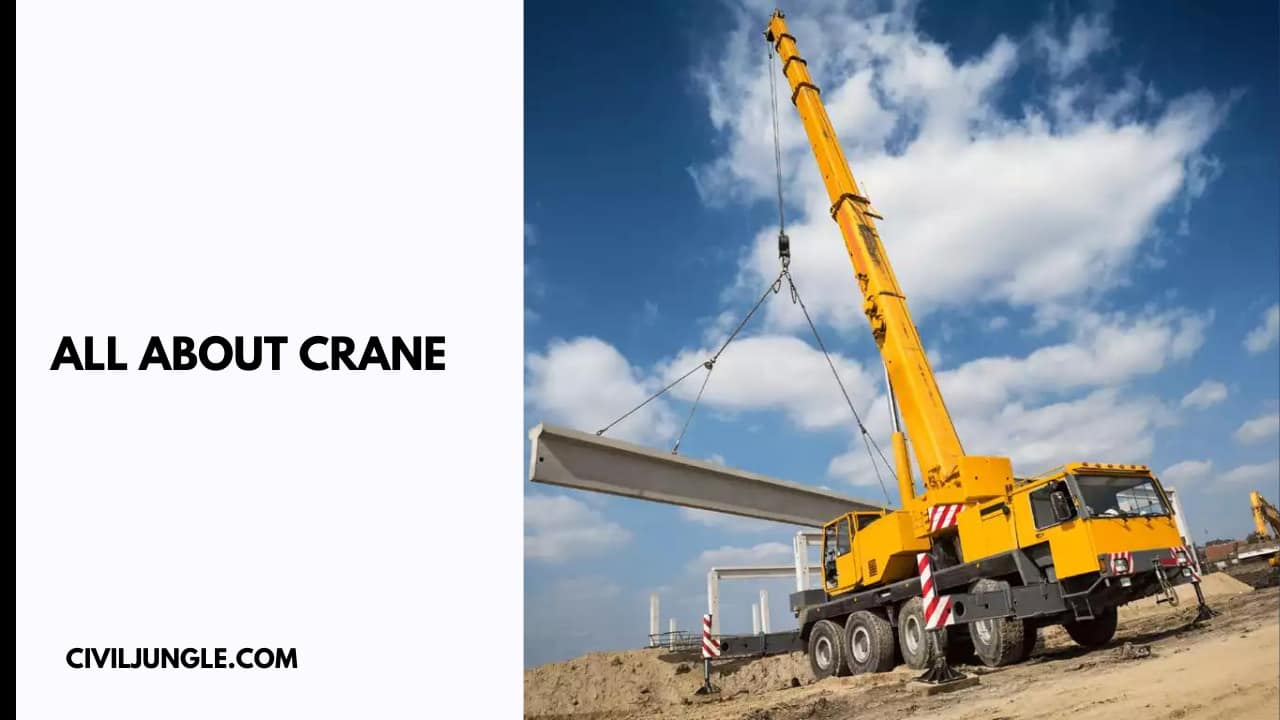
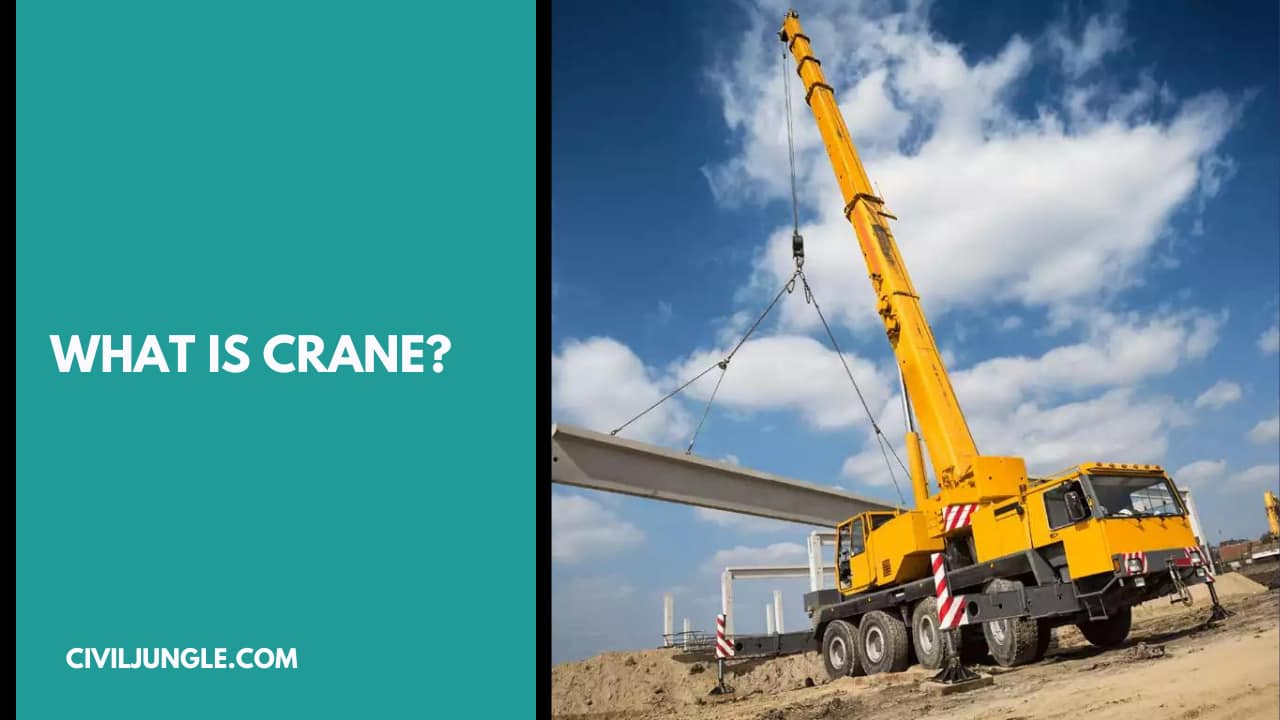
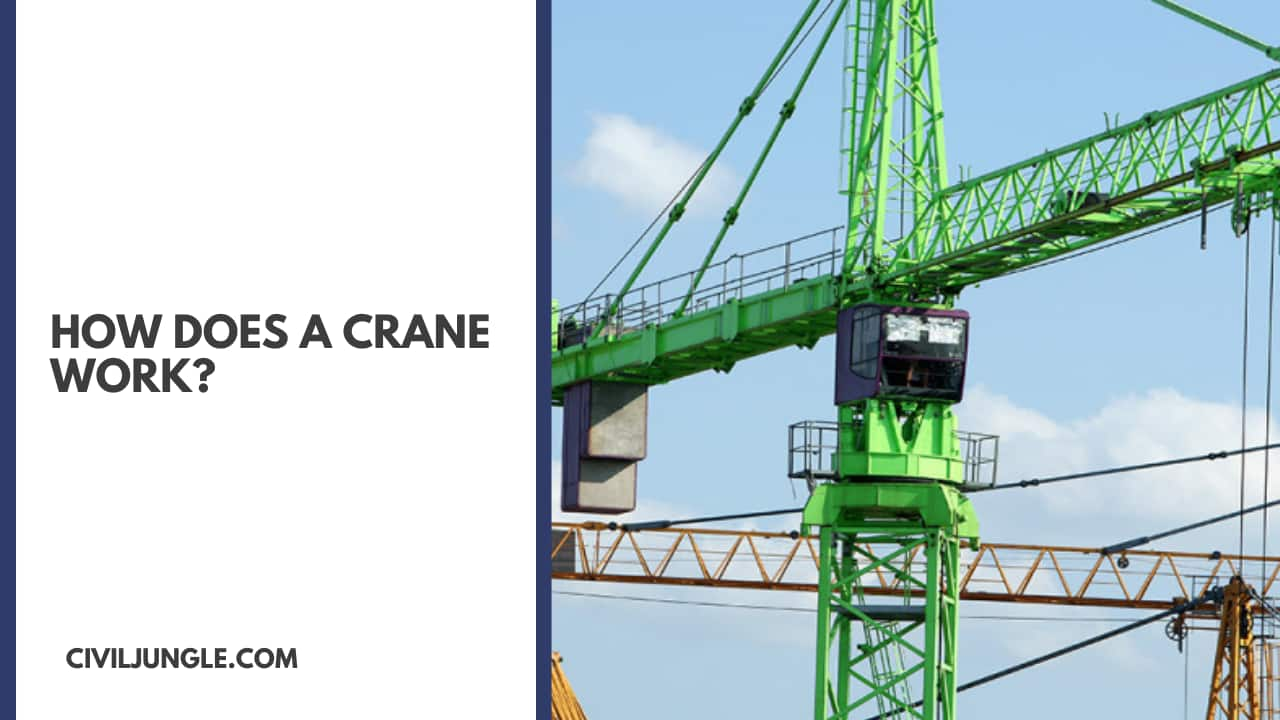
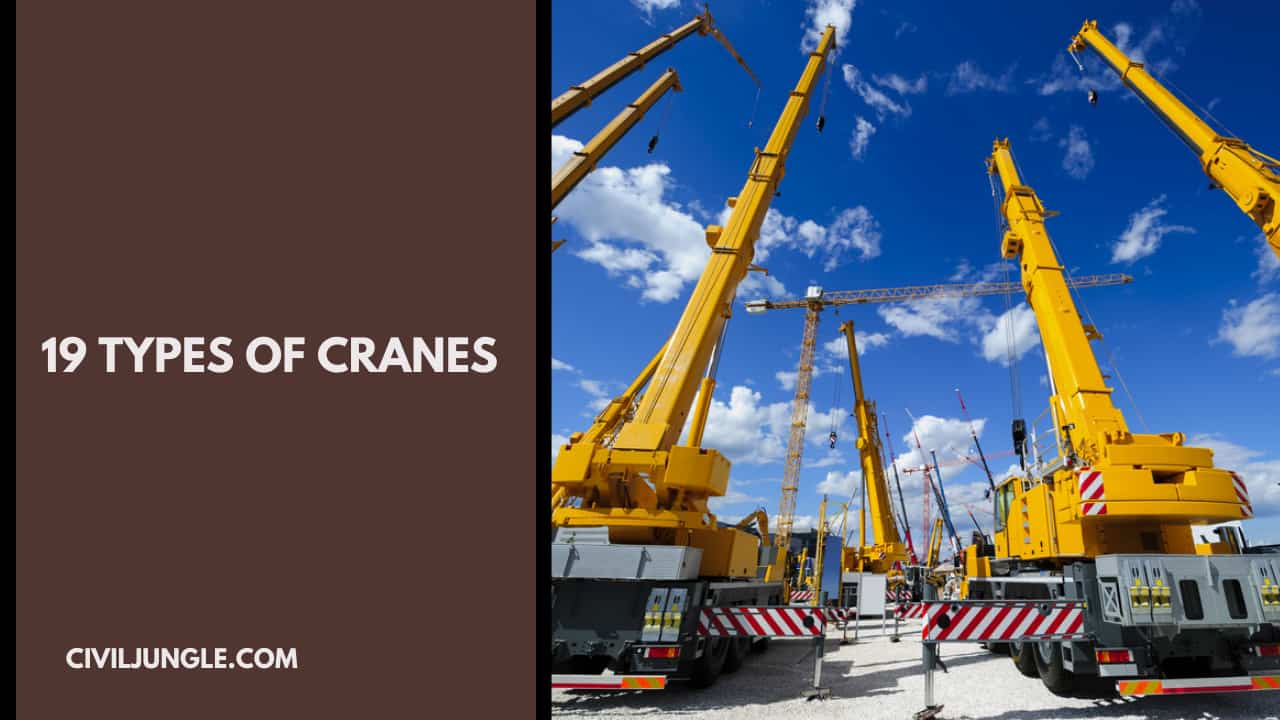

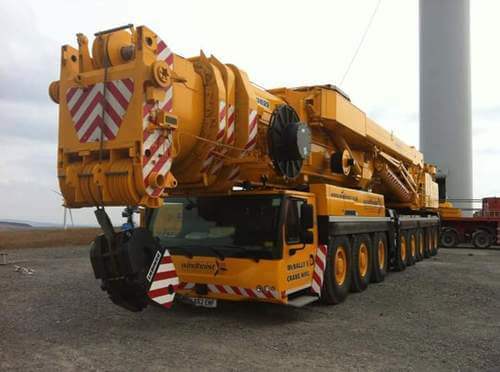
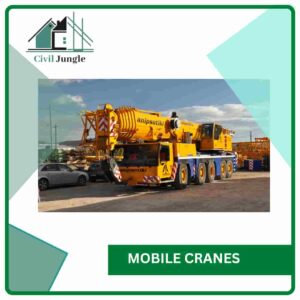
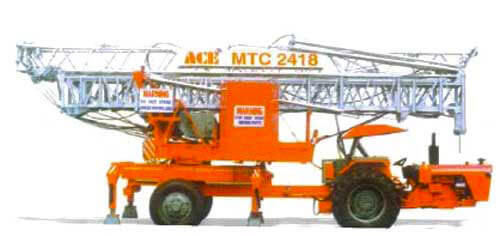
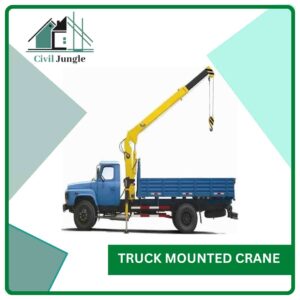
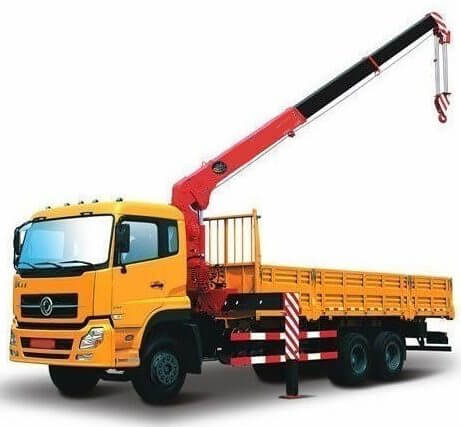
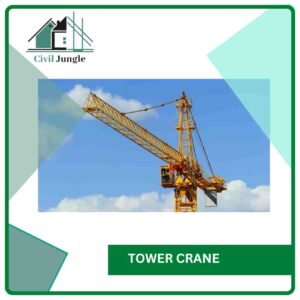
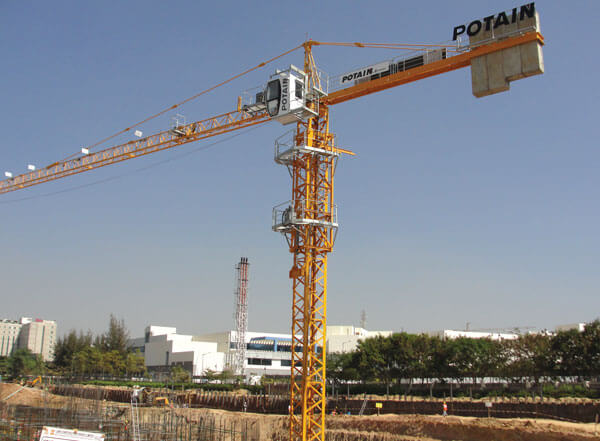
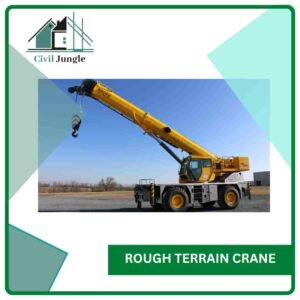
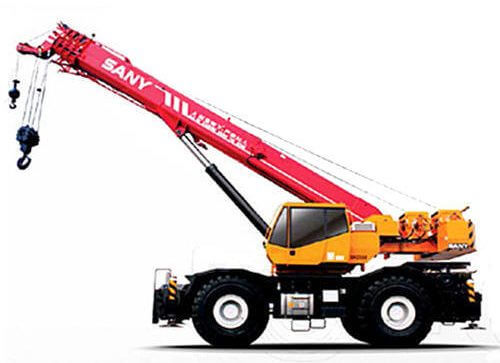
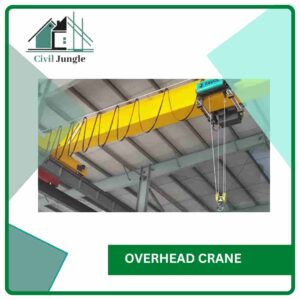
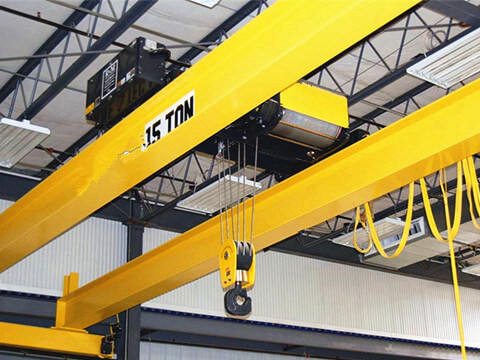
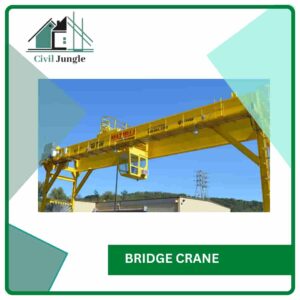
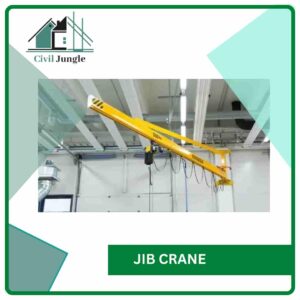
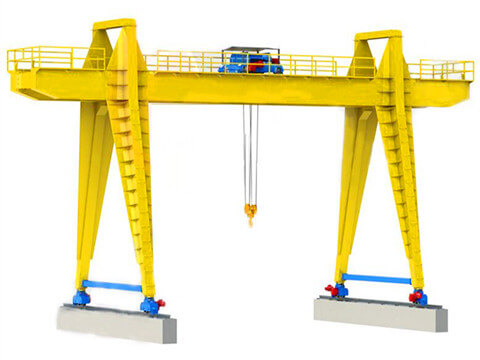
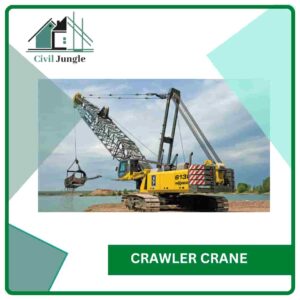
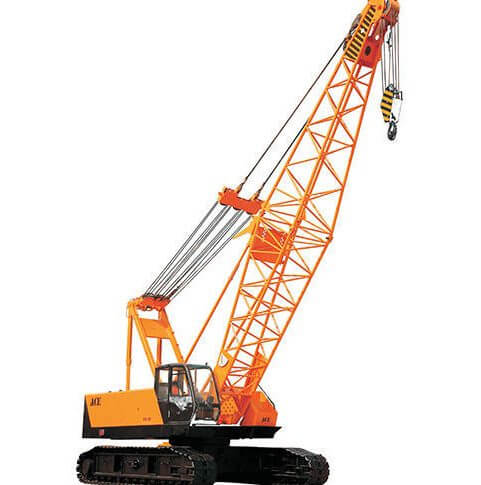
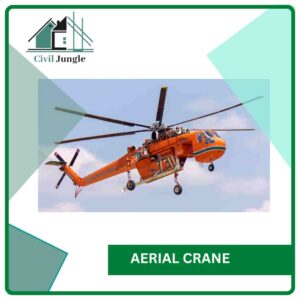
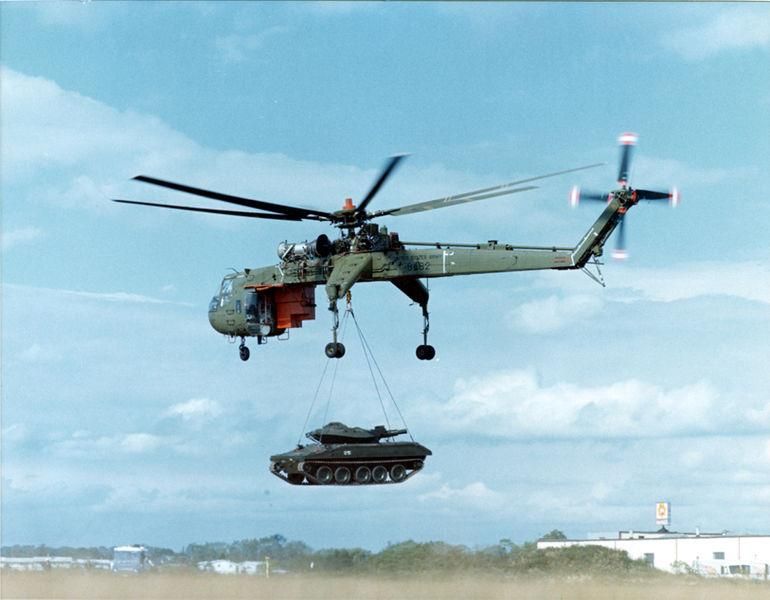

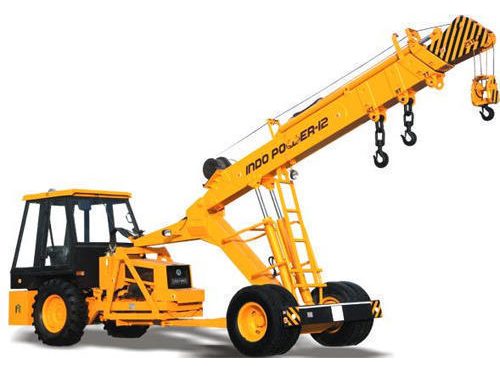
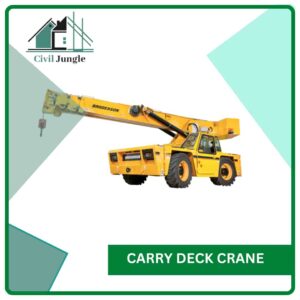
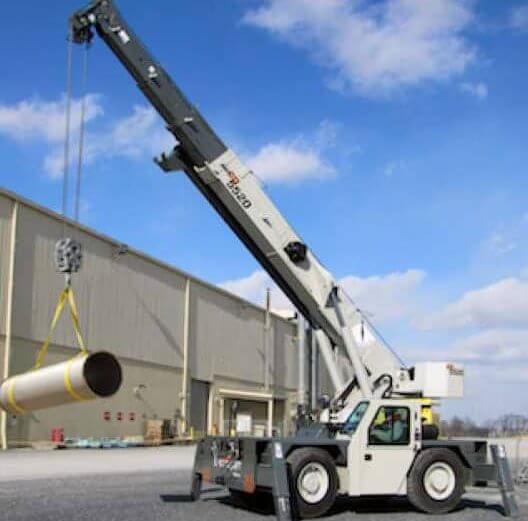
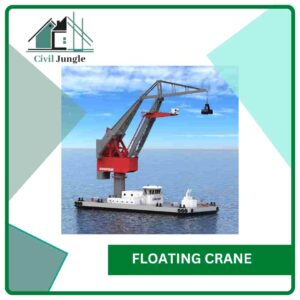
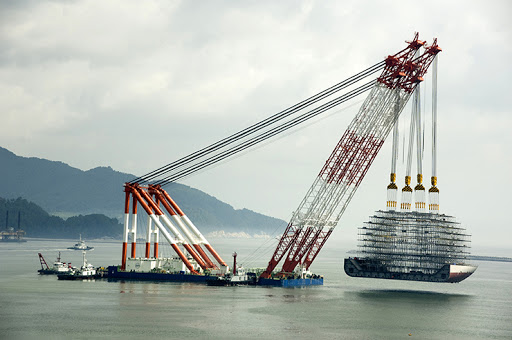
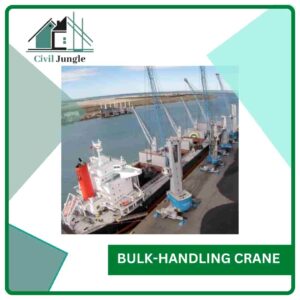
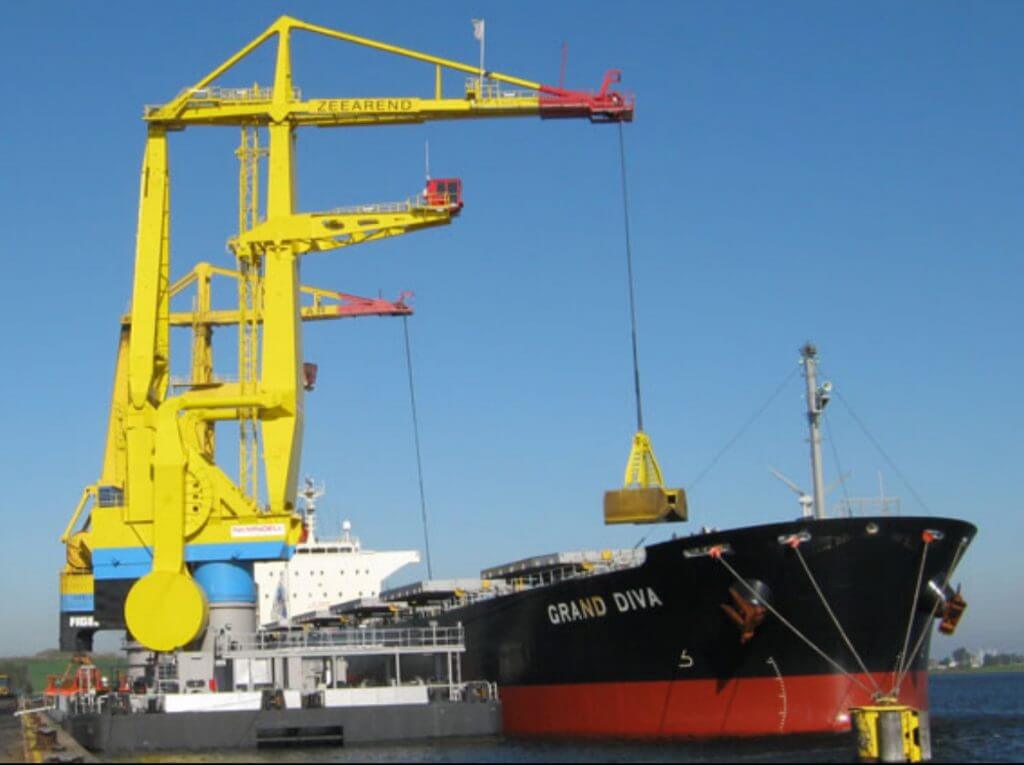
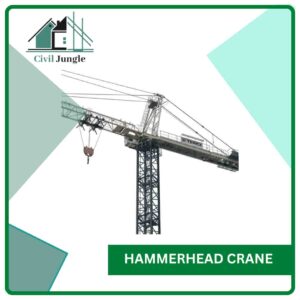
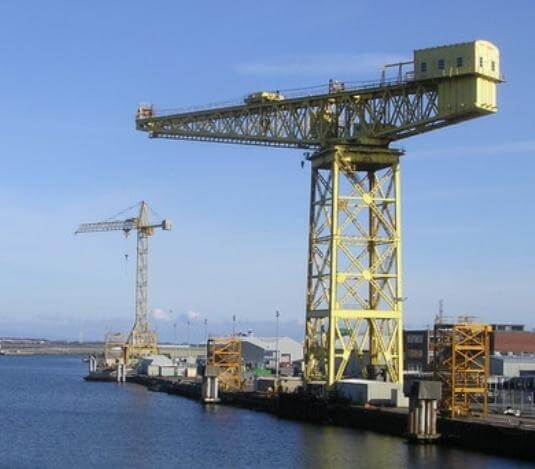
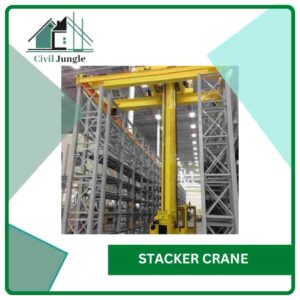
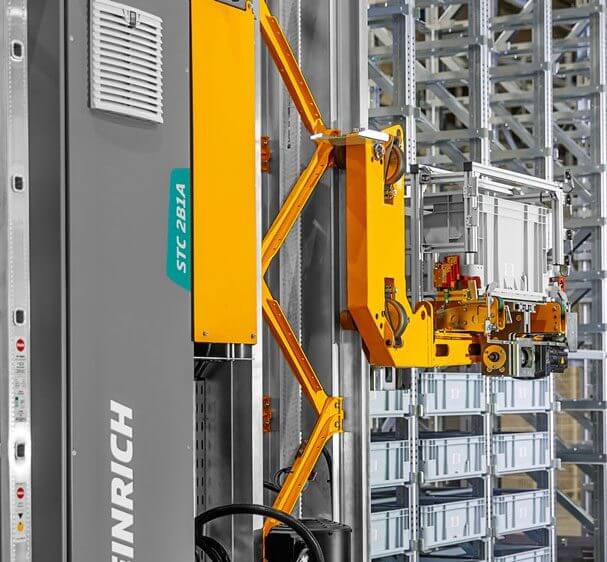
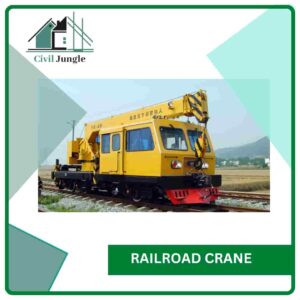
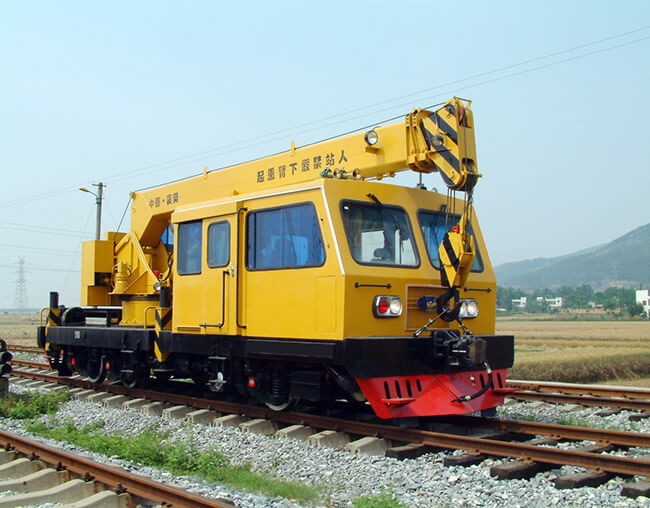
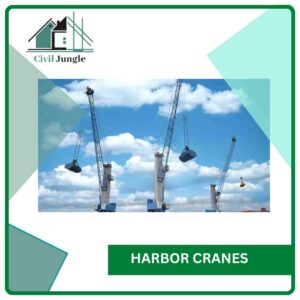
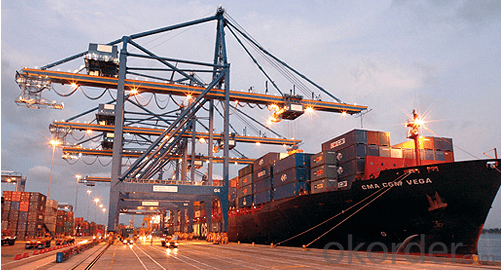
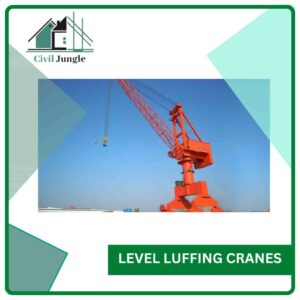
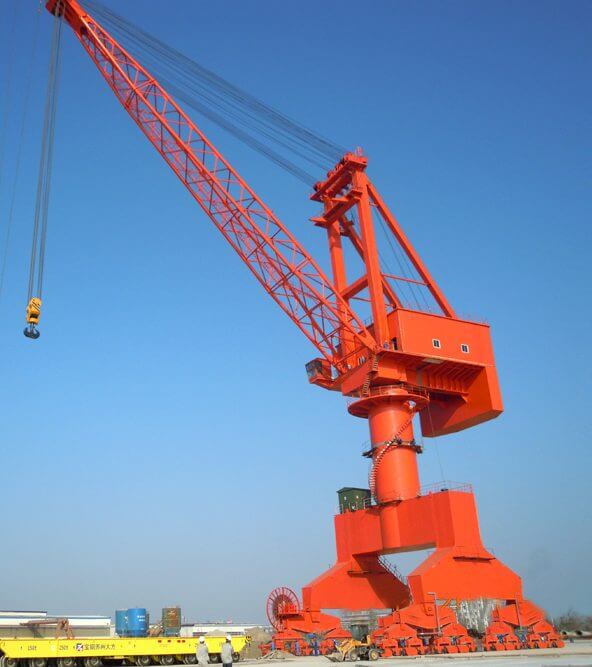
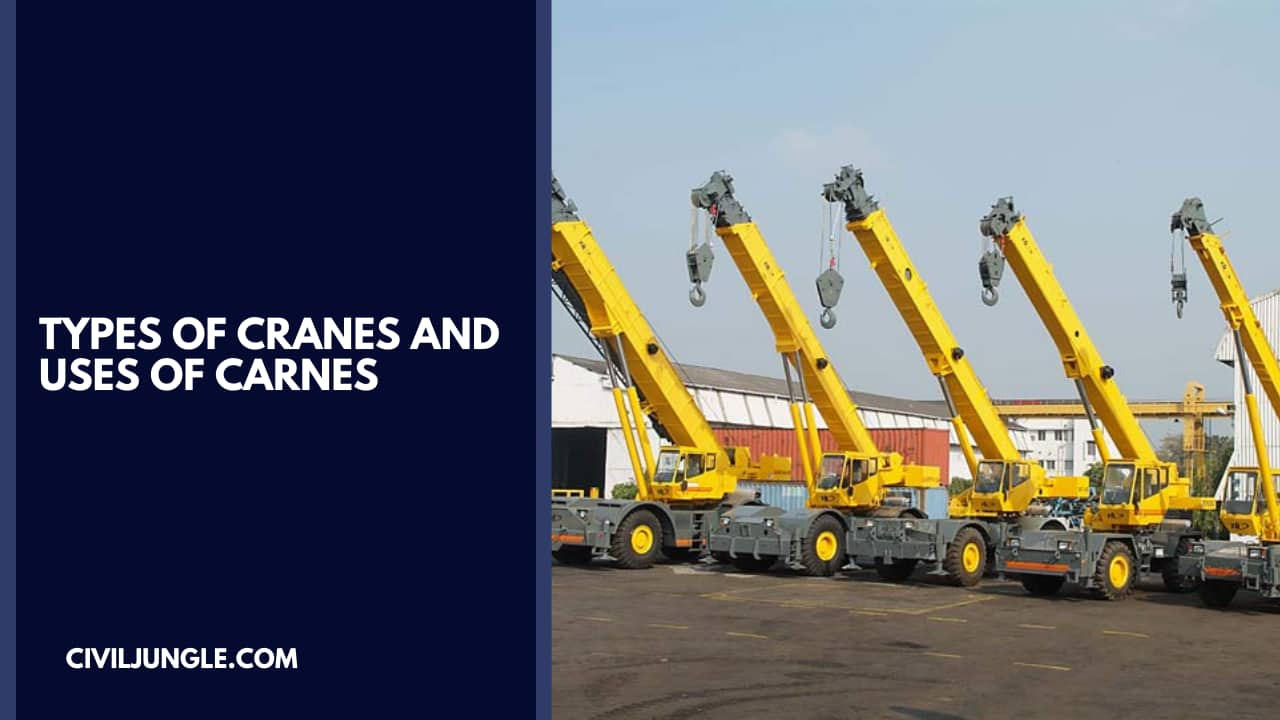

Thanks for sharing with us the different types of crane and how it works. It is an informative article. Using crane remote control, it helps workers to have safer operations and improved working times.
Most welcome
Very helpful information.
Great site thanks…
Thanks for sharing, there’s not a lot of information about cranes. But this helped!
Thank you very much for giving all the crane information and name and picture all useful everywhere have a nice day.